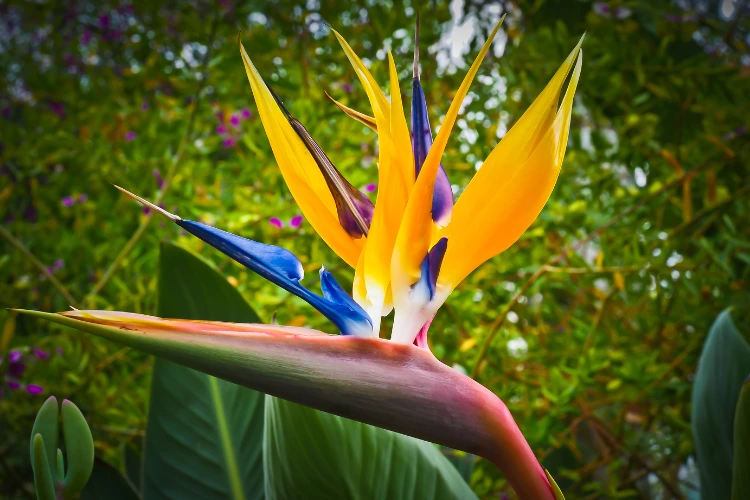
Discover The Types of Bird Of Paradise Plant - Free Care Tips Revealed
Unlock the remarkable world of Bird Of Paradise Plant with our free care tips. Elevate your indoor garden game today!
Share This Post!
The bird of paradise gets its name from the fact that its flower consists of three bright orange leaves and three blue leaves, which are fused into a single bud. While the flower is blooming, each petal appears for the first time, and the resulting shape reflects the shape of a tropical bird in flight.
Surprisingly, the bird of paradise is easier to breed than many tropical flowering plants. The plant is a strong and fast-growing houseplant. It can be moved outdoors in summer and stays out for six months in warmer climates.
Strelitzia reginae is an evergreen tropical herb that is native to South Africa. Given his Strelitziaceae family by taxonomists, he is still closely related to bananas (Musaceae). This plant is often incorrectly called a “banana tree” because it resembles banana trees. These royal plants (called Reginae) are named after beautiful orange crane-shaped flowers, like the birds of paradise they produce. Under the right conditions, including full exposure to the southern light, sufficient humidity, and temperature, the bird of paradise can bloom indoors, but this is rare.
Broken leaves that give the Bird of Paradise plant a bird-like morphology are considered deliberate leaf break or leaf lobes to reduce wind resistance scientifically. They developed into slits along the side seams of the leaves for the wind to pass through.
Different Types Of Birds Of Paradise Plant
1. Mexican Bird Of Paradise - CAESALPINIA MEXICANA
The thick and deep leaves of the Mexican bird of paradise separate it. The Mexican bird of paradise produces bright yellow clusters of flowers in the warm season.
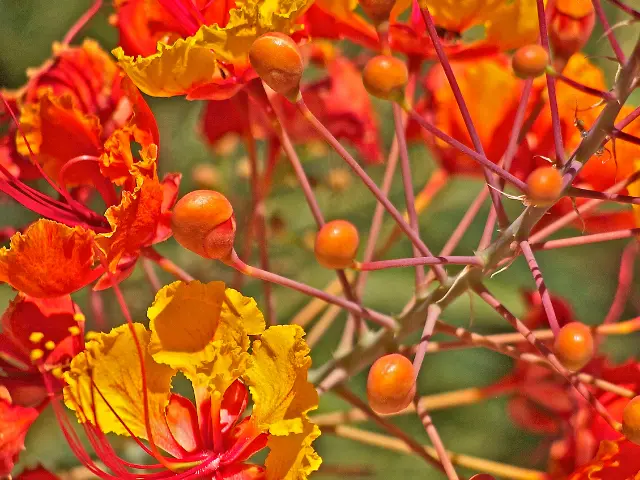
Care of Mexican bird of paradise plant:
The growth and care of the Caesalpinia Mexicana flowers are not painful; However, this plant is often confused with other species in this genus. Although they all have mostly the same growth requirements, it is essential to be aware of the subtle differences between the plants so that you can get the most out of your gardening experience.
2. Red Bird Of Paradise - Caesalpinia Pulcherrima
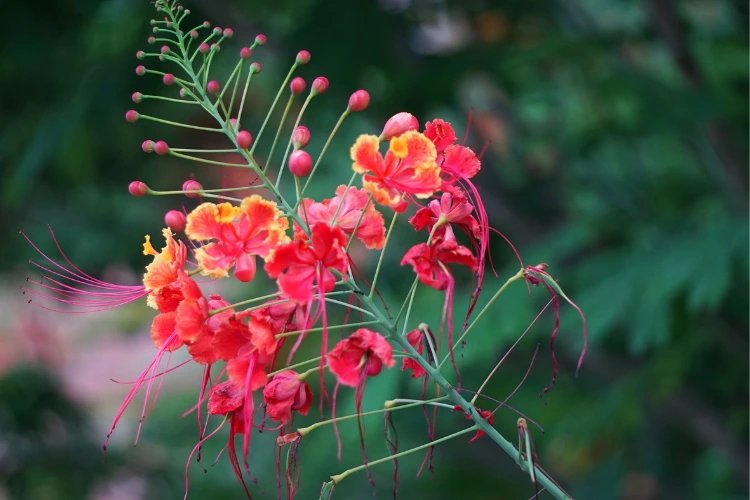 The red bird of paradise is less cold than the yellow bird of paradise. Summer flowers made from orange and yellow bouquets add a lively accent to the landscape.
The red bird of paradise is less cold than the yellow bird of paradise. Summer flowers made from orange and yellow bouquets add a lively accent to the landscape.
This pot-shaped shrub grows in warmer areas of the view that bloom in the hot season.
After the roots are installed, cut the stems to the ground in winter, the foliage turns beautiful red in the cold, so you can leave the stems in winter and cut them in early spring.
3. Yellow Bird Of Paradise - Caesalpinia Gilliesii
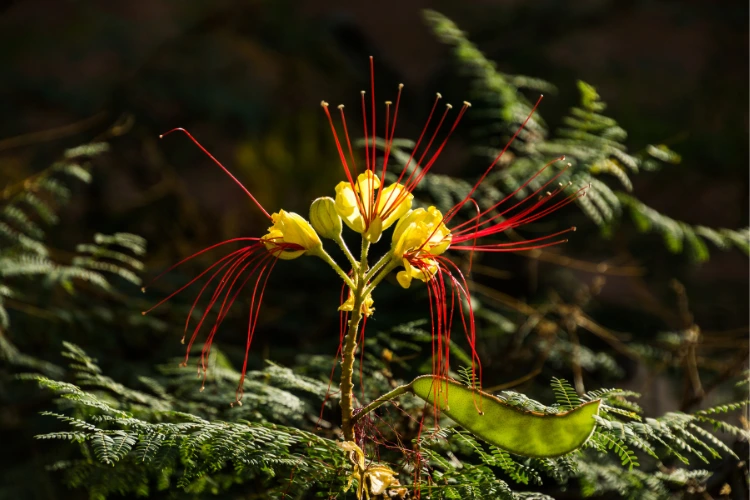 It is a steep and fast-growing shrub that is native to Argentina and Uruguay. In summer, bright yellow tufts of flowers form in their long red stamens.
It is a steep and fast-growing shrub that is native to Argentina and Uruguay. In summer, bright yellow tufts of flowers form in their long red stamens.
The natural growth habit is irregular and transparent, but pruning promotes intensive growth. This long-lived and long-lived shrub is very tolerant of cold, heat, and drought and offers the best performance in full sun. It grows 8 feet wide and 8 feet wide.
All parts of the yellow bird of paradise are poisonous and should never be swallowed.
4. Orange Bird Of Paradise - Strelitzia Reginae
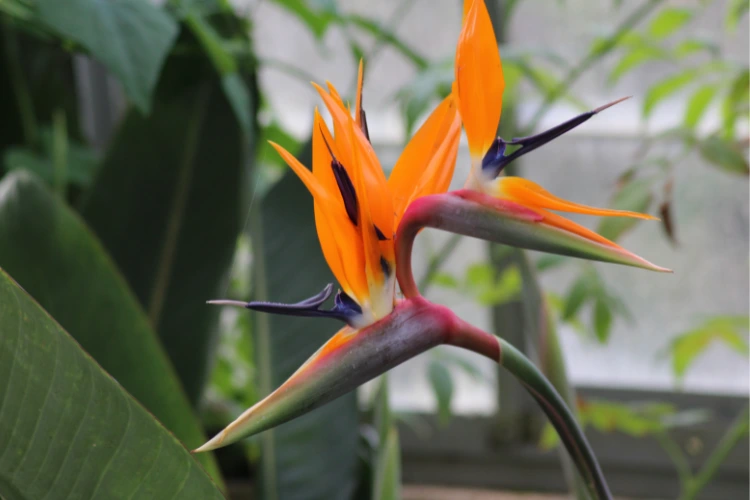 The orange bird of paradise grows in full sun, but looks happier, partly in the sun and partly in the shade.
The orange bird of paradise grows in full sun, but looks happier, partly in the sun and partly in the shade.
Plants work best in Zone 10 but can be grown in containers in Zone 9B and transported indoors when it gets cold.
They are slow breeders, about 4 to 6 feet long and wide, and are deer-resistant.
5. Giant White Bird Of Paradise - Strelitzia Nicolai
The white bird of paradise (Strelitzia Nicolai) has an outstanding display of large tropical leaves that can grow up to 20 feet tall in the wild countries of South Africa!
In human spaces, it is more likely to be anywhere between 3 “and 8”, but due to the size of its rich leaves, it is still one of the favorites of houseplant fans.
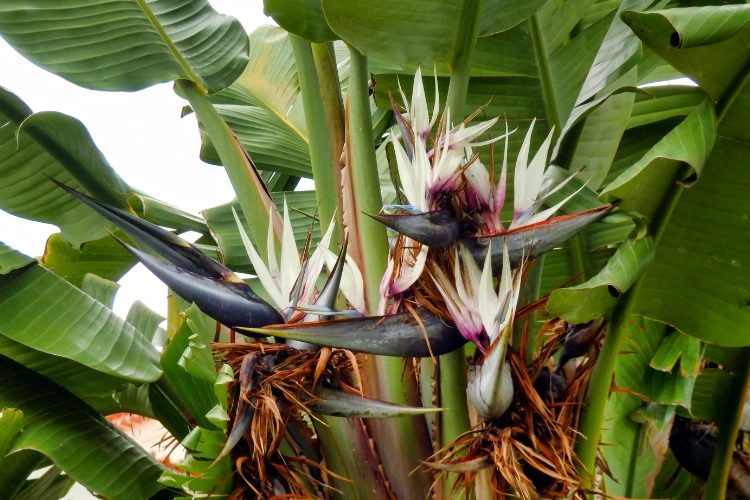
For your bird of paradise, choose a place outside of drafts and drafts where the system faces south, west, or east for at least four hours.
Although they tolerate poor lighting conditions, Bird Paradise will not thrive in the long run without enough sunlight. We, therefore, recommend that you always expose them to bright light.
Bird Of Paradise Plant Care!
Strelitzia is an evergreen tassel plant. A mature group can be 5 feet tall and 5 feet wide. Gray-green waxy leaves are approximately 18 inches long and resemble banana leaves.
Gardeners are interested in colorful flowers, each with three bright orange bracts and three indigo leaves. It is these flowers that give the plant its common name.
If you are looking for lots of flowers and shorter stems, try growing the bird of paradise in full sun. Those that grow in the shade have more abundant flowers, but longer stems.
The plant produces flowers in tropical climates all year round. Most flowers grow on the outside of the tufts. Plan your planting so that there are enough flower areas and leave your paradise plants about 6 meters away outdoors.
Water Paradise Plant
Weekly water. Let the mixture dry before pouring. About 1 to 2 inches of soil should feel dry.
Water more frequent in hot months and fertilize as it grows. Usually, the plant falls, or the leaves are bent to show that they need more water. The soil has been wet for too long as this promotes root rot.
Caring Points
| Disease | Cause | Solution |
|---|---|---|
| Leaves that turn brown and fawn on the leaf margins | Watered, high salinity, or potassium deficiency. | Authorized rights and the response. |
| The leaves have tears closed the lateral ribs | Twisting of the leaves due to controlled damage. Maybe because of the strong wind or the perception of the plant. | Pay attention to the space around your system. |
| Withered or curled leaves. | Underwater | Authorized rights and the response. |
| Yellowing with bright yellow finances. Base sheets change color should be heard for longer. | Putrefaction or root disease; Over-watering; or in a vase. | Let the damp floor dry or try repotting. |
